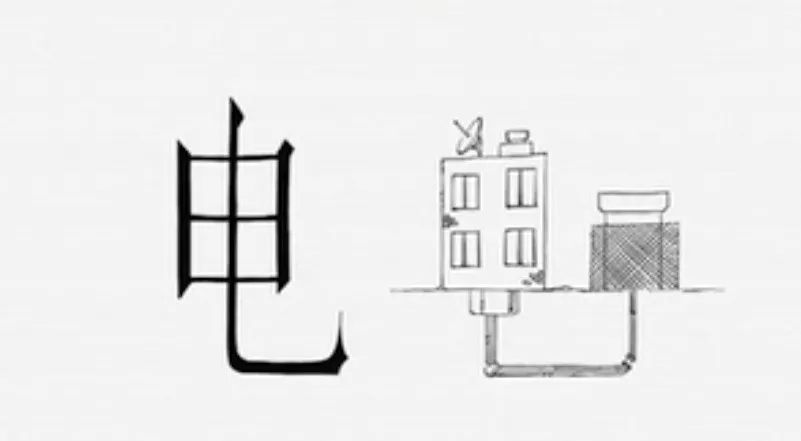西班牙人Fernando Arboleda是一名画家,他喜欢学汉语,并且汉字对于他来说,是十分具有美感的。它们和用拉丁字母书写的语言完全不一样,每个字都有其都有独特的含义,而这些汉字背后深厚的文化底蕴令他十分着迷。
于是Fernando Arboleda将汉字与绘画结合。创作了《imaCHINAtion》一书,书中Fernando Arboleda把汉字通过很生动的图画表现出来,并且他希望通过这样的方法帮助学习中文的外国人更好地理解每个汉字的含义。

Fernando Arboleda在《imaCHINAtion》一书中关于“电”字的图解
和大多数人一样,Fernando Arboleda也是从拼音开始学习中文的,但当他头一次看到汉字的时候,就对汉字产生了一种特殊的感情。为了让学习中文变得更容易,也更有意思,他产生了一个想法,为什么不把汉字用图画表达出来呢?
于是他精心挑选了120个常用的汉字,为每个汉字配上一张图画和一句西班牙语解释。

经过三个多月的努力,《imaCHINAtion》终于完成了。当Fernando Arboleda把这本书拿给不懂中文的西班牙人看时,即使不看西语注释,人们也能猜出汉字的意思。
但其实现代中文的汉字本来就起源于甲骨文,就是一种象形文字,下面我们来看一下真正的汉字演变过程吧

冰refers to ice, water which has frozen to a solid at zero degree centigrade. In the Oracle-Bone Inscriptions and Bronze Inscriptions, the character冰looks like two ridged ice blocks. In the Later Seal Character, a water part(水) is added to indicate that ice isformed from water.

In the Bronze Inscriptions, the character寒 looks like a man in a room full of Straw(material for warming up), the two dots underneath the man standing for ice blocks, hencethe primary meaning“cold”.As cold weather may cause a man to tremble, the character寒an also mean“to tremble", even with fear, e.g.胆寒(terrified),心寒(bitterly disappointed). In adition,寒may be used in the sense of "poor".贫寒(poor), 寒酸(miserable and shabby)
来源:vipchinese网
